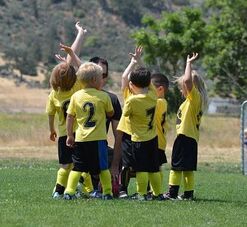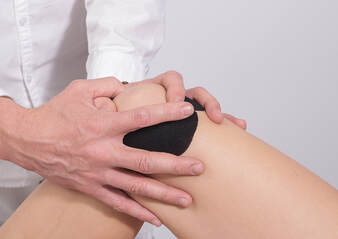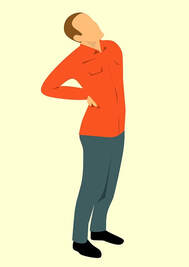|
Exercising and staying fit during a pandemic can be a challenge. Exercise can not only keep you physically healthy , but can also improve our mental health. Unfortunately, many of us rely on services like gyms, yoga studios, spin classes, and organized sports to incorporate exercise into our schedule. With most of these services shut down for the time being or facing major changes once reopened, many are looking closer to home for ways to stay active.
There are a number of benefits to working out at home like no travel time and being able to watch your favourite TV show or blasting your best tunes while breaking a sweat. Thanks to the internet and the free amenities just outside our doors, there are plenty of options for staying active close to home.
1 Comment
In order to continue serving our clients and community while maintaining a safe environment for all, we have taken certain measures in order to limit the spread of COVID-19 while returning to normal operations.
The following measures have been taken in order to increase our clients' and staff's safety.
We will continue to monitor the situation and adjust our measures and protocols as necessary. If you have any questions or concerns, please do not hesitate to contact us. We've created a video library on YouTube of commonly prescribed exercises to help our clients with their homework. Can't quite remember how to do your exercise? Need a visual to help you out? Or maybe you're looking for something to help with something that's been bothering you.
Check out our YouTube page to see our new exercise video library!  With the school year starting back up, children and teens can start spending a lot of their spare time in sports practice. While they may demonstrate promising talent, young athletes are actually more at risk of injuries. There are various reasons why they are more susceptible to injury such as their bones may not be fully solidified, or that their body hasn’t had the chance to adapt to a recent growth spurt. On top of that, reflexes and coordination aren’t fully developed yet. Simply put, young athletes are often put in a position in which they are prone to various injuries, as well as burnout. With the school year starting again, here are a few things to consider to keep your young athlete in top shape.
Reference: Overuse Injuries, Overtraining, and Burnout in Child and Adolescent Athletes. Joel S. Brenner. Pediatrics Jun 2007, 119 (6) 1242-1245; DOI: 10.1542/peds.2007-0887 We’ve had more than our share of sunshine lately, and many of us have developed a tan by now. While children and adults will have no issue with finding something fun to do outside, the older and wiser of us may find it challenging to find a fun and safe activity to enjoy in the outdoors. Thankfully there are a few options out there for seniors to participate in:
It is also best to use caution when there are extreme heat warnings (like over the past few weeks). Seniors typically have a decreased tolerance to heat and are at risk of further complications. Look for shaded areas and make sure to stay properly hydrated. However, when there’s an actual extreme heat warning, it may be best to stay in a cooler area with AC. It is quite typical to lose muscle mass and overall strength as we age. We also tend to get fatigued more quickly and also tend to get injured more easily. For those reasons, many seniors simply stop being active. However, this can quickly become a downwards spiral - the less active we are, the more we lose strength and mobility, which in turn discourages us from being active and so on, all the while increasing our risk of injuries and falls.
For this reason, it is important to remain active as we age. “Being active” doesn’t necessarily mean running a marathon; in fact, many exercise programs are tailored specifically to seniors. These activities aim to practice mobility, balance, and coordination. These aspects are important to prevent falls as well as preserve mobility. Ultimately, we want to maintain our independence well into our golden years. Here are some great activities that act on those goals:
 If you’re a runner, cyclist, or hiker, chances are you’ve either experienced pain, tension, or some kind of discomfort along your iliotibial band, commonly referred to as the infamous IT band. This can often be diagnosed, or misdiagnosed, as ilitiobial (IT) band syndrome. People will often be told or read that rolling it out using a foam roller or yoga ball is the best fix. While for some that may be a way to reduce some pain, the truth is that it won’t do much in terms of fixing the issue at heart. The IT band runs from the top of the tip along the outside of the thigh down to the outside of the knee. It’s mainly formed of a long stretch of fibrous connective tissue, rather than actual muscle tissue. It is connected to several neighbouring muscles and is predominantly pulled on by the TFL (tensor fascia latae) and the gluteus maximus, two muscles in the hip. Since the IT band is predominantly composed of dense connective tissue, research has concluded that no amount of stretching, massage, or foam rolling will have a significant effect on the IT band. So why does it feel good? In essence, pressure applied to the area can create an analgesic effect, relieving some pain symptoms but not solving the core of the issue. The cause of IT band syndrome can vary by individual as well as their main sport or activity practiced. Unfortunately, there’s no “one exercise fits all” when it comes to IT band pain, but here are a few of the most common causes and solutions. Osteoarthritis, commonly referred to as OA, is the most common form of arthritis, afflicting nearly 1 in 6 Canadians. Osteoarthritis most commonly affects the knees or hips, but can also affect other parts of the body such as the wrists, shoulder, toes, low back, and the neck.
Unfortunately, there is no cure to OA. However, there are many ways to minimize symptoms and regain full functionality. Further, there are many things to be done in order to slow the progression of osteoarthritis in our bodies. Two of the best ways to deal with OA are as follows:
By now it’s safe to say that the majority of us are aware of the effects of smoking on our lungs, as well as the increased risks associated to our health such as cancer.
In case you were looking for yet another reason to stop smoking, here’s one for you. A lesser known fact is that smoking also has negative effects on your bones and soft tissues, such as muscles and tendons). Smoking reduces bone mineral content, causing your bones to become less solid and putting you at greater risk of developing osteoporosis. This increases your changes of suffering a fracture from a fall and hinders your bodies ability to heal these fractures. Smoking also generally slows the body’s healing process. Smoking has been found to have effects on the creation of collagen, the fibre found at the base of most tissues throughout our body. Our bodies heal from injuries by producing collagen, working as a network to connect broken or damaged tissues. As smoking decreases the body’s ability to produce collagen, the healing process takes a hit. Not only does smoking make it harder for your body to heal from injuries, it also makes it prone to overuse injuries. As we go through our every day activities, our body will naturally heal itself from daily usage such as our workouts, working on our home renovations, and our long bike rides in the summer. But, an impaired ability to heal ourselves puts the body at risk of becoming damaged over time. Add to the list that smoking has been shown to negatively affect muscle mass and strength. Essentially, muscles have a harder time maintaining themselves, resulting in decreased muscle strength and mass over time. Tendons, connective strings that attach our muscles to our skeletons, are also negatively affected by smoking. Research has shown that on average, smokers suffer more serious tears when compared to non-smokers and are more likely to develop persistent pain. With all these reasons in mind, if you’re a smoker or know a smoker, this may be the time to kick the bad habit and help your body be it’s best self! Check out https://www.ontario.ca/page/support-quit-smoking for more resources on smoking cessation.  Pain in the lower back is one of the most common reasons for consulting a healthcare professional such as a doctor, chiropractor, or physiotherapist. Low back pain is so common that about 40% of the population will suffer at least one episode of it during their lifetime. In the past, the most common treatment for low back pain was bed rest. While this made sense to many, research has repeatedly shown that rest is far from the best way to tackle low back pain. In fact, we now know that one of the best ways to resolve low back pain is by continuing your daily activities within reasonable limits of pain. When an area of our body is injured, the healing process is initiated and accelerated by subjecting the body to adequate activity. Without movement, muscles and ligaments become weaker, and over enough time even bones become more brittle and susceptible to injury. With that in mind, individuals that remain active throughout their episode of low back pain generally recover faster. It is, all the while, important to avoid over-exerting the back, causing further irritation and prolonging recovery. All this, however, is not to say that best rest must be avoided at all cost. In extreme cases with very high levels of pain, a short period of bed rest (one or two days at most ideally), may be beneficial to lower initial pain levels. If you’re unsure how to manage your episode of low back pain, or are frequently afflicted by episodes of low back pain, consult one of our physiotherapists today. |
|
We are proud to be a bilingual, inclusive clinic.
|
Hours of Operation
Mon-Thur: 7:30am - 7:30pm Fri: 7:30am - 6:00pm Sat/Sun: Closed 1185 Bank Street
Ottawa ON K1S 3X7 Expert care in the Glebe & Ottawa South. Free parking available! |
|


 RSS Feed
RSS Feed



